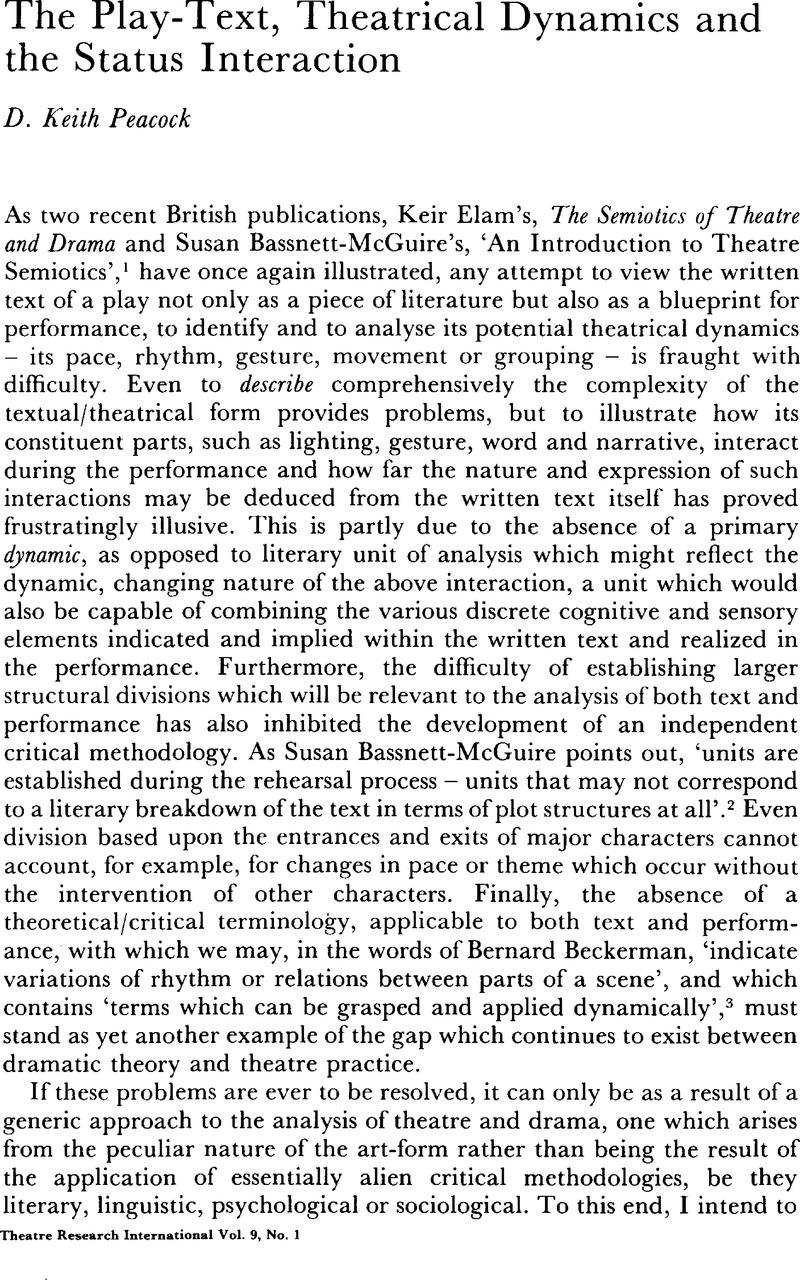Published online by Cambridge University Press: 23 January 2009

1. Elam, Keir, The Semiotics of Theatre and Drama (Methuen: London, 1980)CrossRefGoogle Scholar and Bassnett-McGuire, Susan, ‘An Introduction to Theatre Semiotics’, Theatre Quarterly, X.38.1980.Google Scholar
2. Bassnett-McGuire, , op. cit., p. 50.Google Scholar
3. Beckerman, Bernard, ‘Dramatic Theory and Stage Practice’, in Knauf, D. M., ed., Papers in Dramatic Theory and Criticism, University of Iowa Press: Iowa City, 1967), p. 35.Google Scholar
4. Elam, , op. cit., p. 209.Google Scholar
5. Beckerman, Bernard, ‘Theatrical Perception’, Theatre Research International, IV.3.05 1979, p. 160.Google Scholar
6. Ibid.
7. Ibid.
8. Ibid., p. 163.
9. Johnstone, Keith, Impro: Improvisation and the Theatre (Faber: London, 1979).Google Scholar
10. Hall, Edward T., The Silent Language (Anchor Books edn.: New York, 1973), p. 39.Google Scholar
11. Beckerman, , ‘Theatrical Perception’, p. 159.Google Scholar
12. See Laban, Rudolf, The Mastery of Movement, 3rd edn., rev. & enl. by Ullmann, Lisa (Macdonald & Evans: London, 1971).Google Scholar
13. Birdwhistell, Ray L., Kinesics and Context: Essays on Body-Motion Communication (Penguin: Harmondsworth, 1971), p. 158.Google Scholar